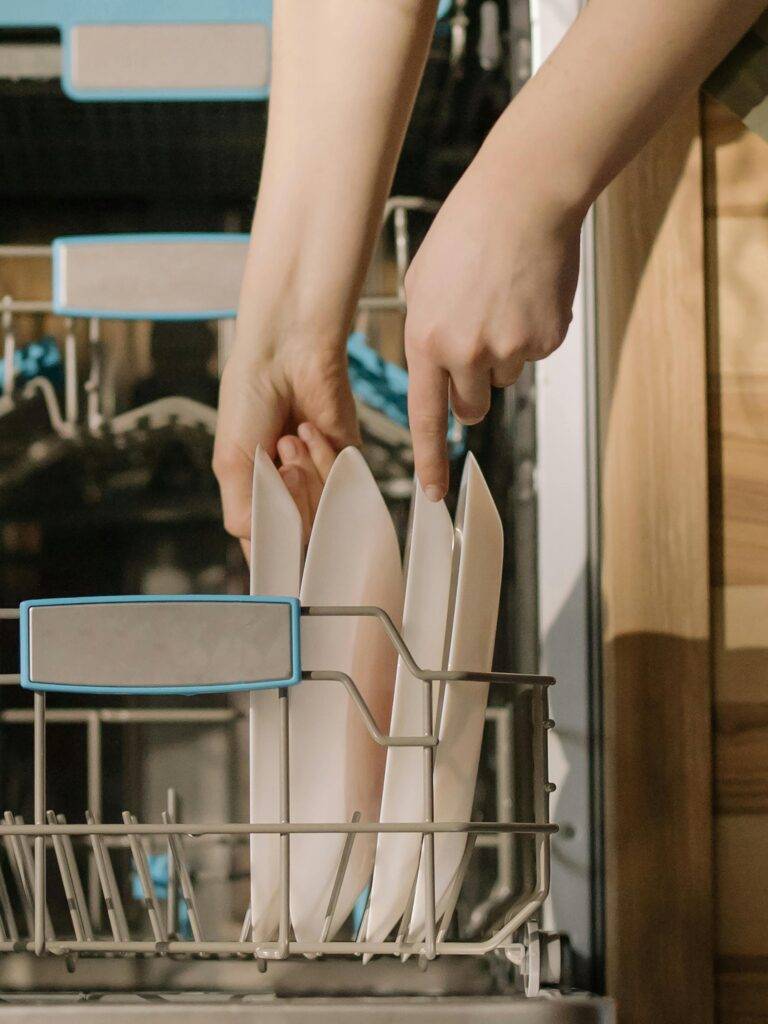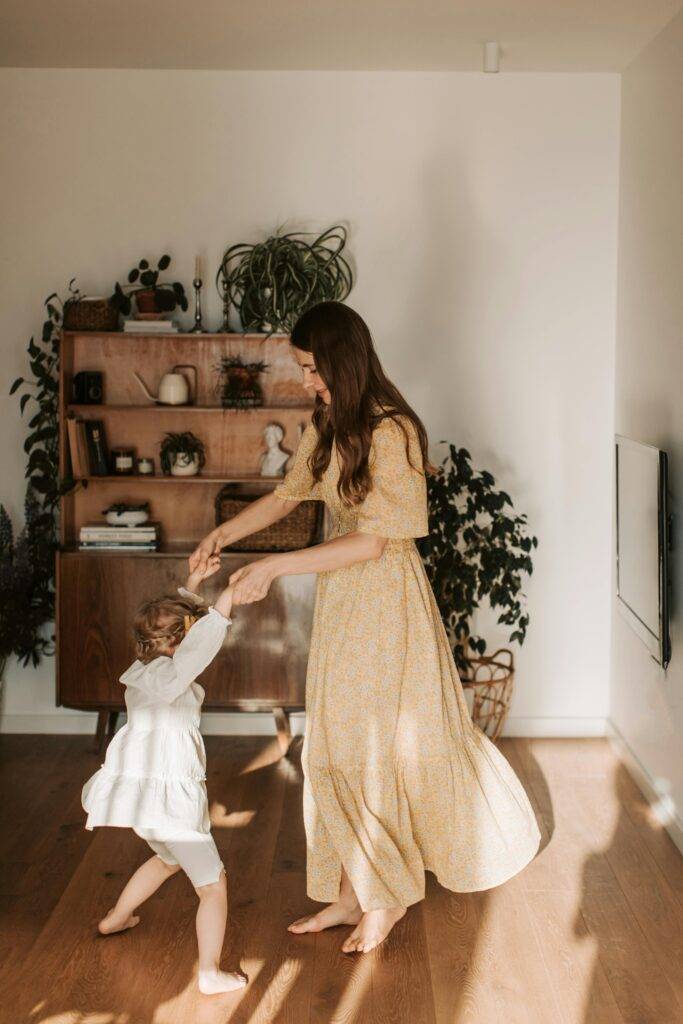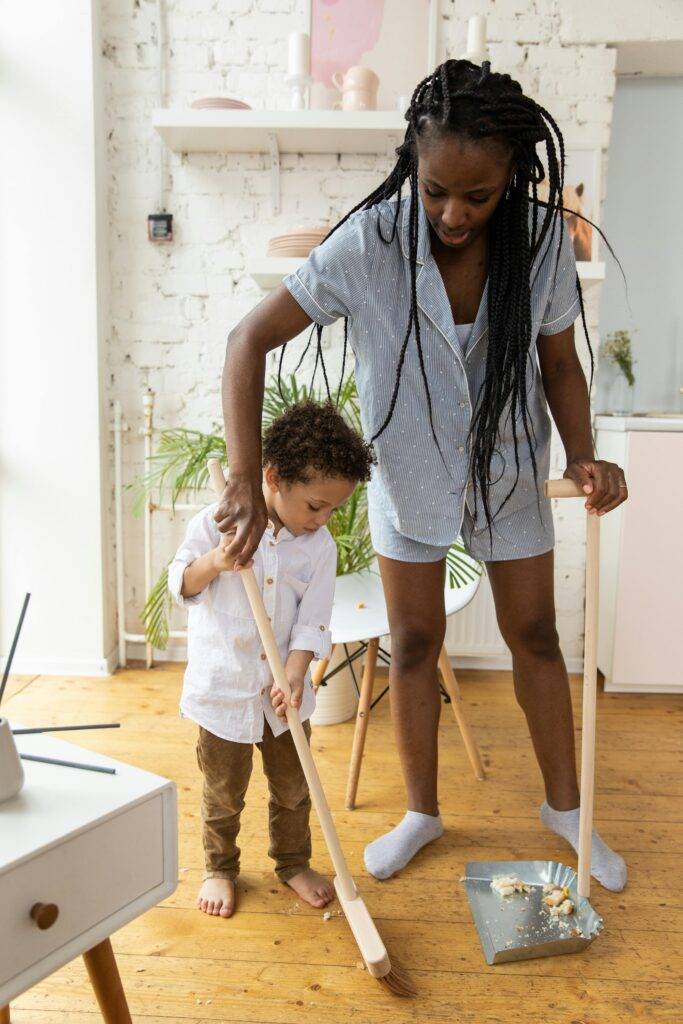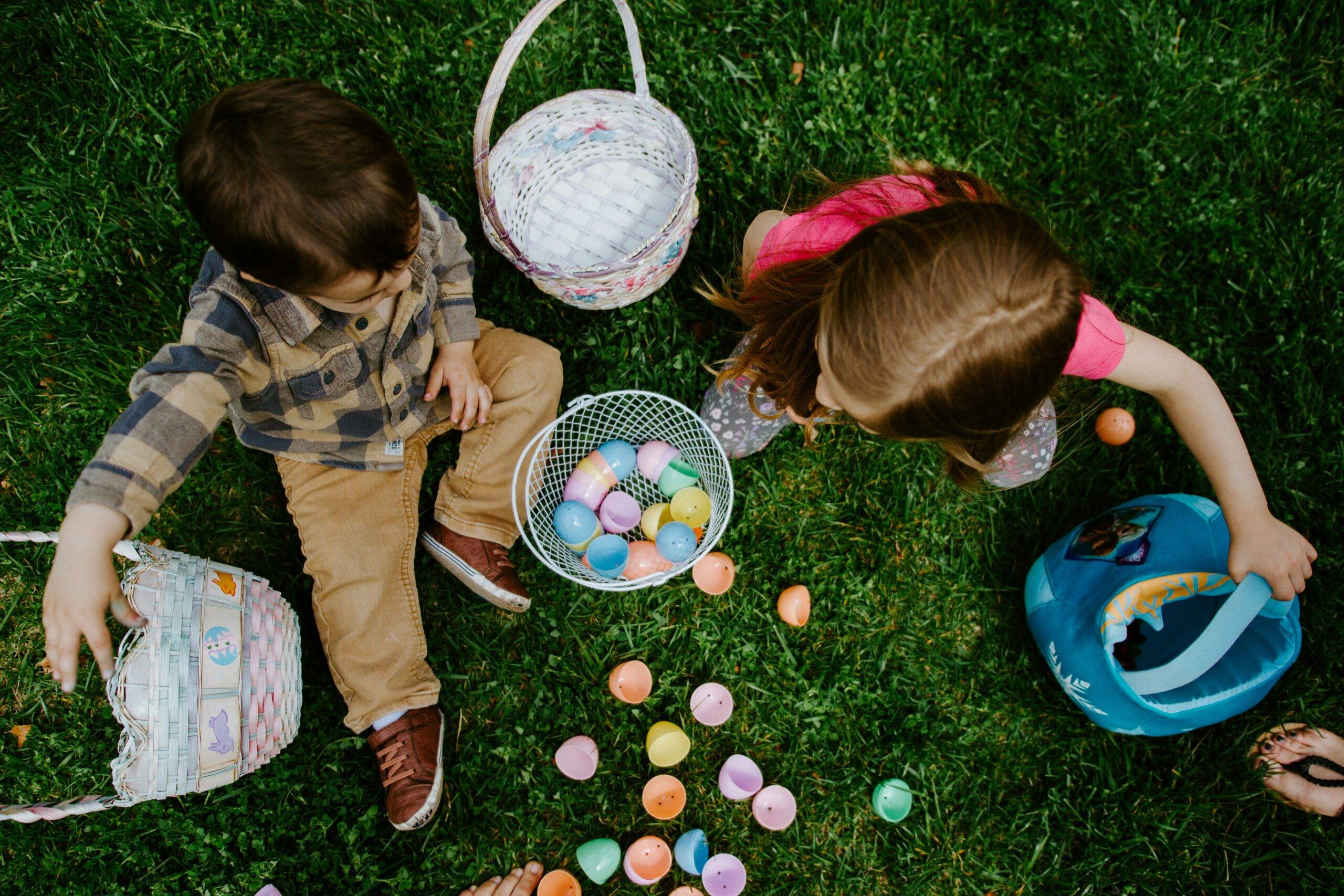Getting kids to help with chores doesn’t have to be a battle of wills.
You don’t need a chore chart the size of a billboard or a reward system that rivals a corporate bonus plan.
What you do need?
A little creativity, patience, and the ability to make chores feel more like play than work.
Here’s the good news: Kids want to feel capable and involved but don’t want to be nagged.
If you’re ready to turn “I don’t wanna!” into “Can I do that one?”, this list of fun ways to get kids to help around the house will do the trick.
Whether you’ve got toddlers, big kids, or tweens with a dramatic flair, these ideas are realistic, playful, and work.
1. Turn Chores Into a Game

Kids love games—and honestly, we kind of do too.
Injecting a little competition or imagination into chores can instantly make them more appealing.
Try This:
- Beat the Clock: Set a timer and see how many toys they can put away before it dings.
- Sock Matching Race: Who can find the most matching socks?
- Chore Bingo: Make a bingo card with simple tasks. When they get five in a row, they win a small prize or get to pick the next family movie.
Why It Works: Kids respond to a clear goal and an endpoint.
A timer makes the task feel fast and manageable, while games give them a sense of challenge and fun.
2. Let Them Be the Boss (Sometimes)

You know what kids love? Feeling like they’re in charge.
Give them the power to assign tasks (within reason), pick music while cleaning, or choose which room to tackle first.
Try This:
- Rotate a “Chore Captain” every week.
- Let them make the to-do list on a whiteboard.
- Ask, “Which two things do you want to help with today?”
Why It Works: Giving kids agency makes them feel like their opinion matters—and less like they’re being bossed around.
3. Add Music, Movement, and Mood

Create a chore playlist that everyone dances to while cleaning.
It sounds simple, but music can completely change the energy in your home.
Try This:
- Let each kid add their favorite song to the playlist.
- Have a “dance break” every 10 minutes.
- Make up a silly cleaning dance (the vacuum shuffle, anyone?).
Why It Works: Music makes everything feel more like a party than a chore.
Plus, moving your body helps release some of that pent-up energy.
4. Create a Reward System That Isn’t Bribery
You don’t have to hand out candy or cash whenever they lift a finger.
Instead, focus on consistent, low-key incentives that build a sense of ownership and pride.
Try This:
- “Chore dollars” that can be cashed in for screen time, a sleepover, or picking what’s for dinner.
- A family “store” with fun but non-expensive rewards like choosing a game night theme or baking something together.
- Earning badges (printable or digital) for trying new chores or helping without being asked.
Why It Works: These systems encourage responsibility and delayed gratification without relying on sugar highs or guilt-tripping.
5. Make Chores Age-Appropriate (And Actually Doable)

A six-year-old shouldn’t be expected to do your taxes—or scrub the bathtub without help.
Make sure tasks are broken down clearly, with tools and expectations that match their age and ability.
Examples by Age:
- Ages 3–5: Sorting laundry, feeding pets, wiping spills.
- Ages 6–8: Emptying trash bins, setting the table, dusting.
- Ages 9–12: Vacuuming, cleaning the bathroom sink, folding laundry.
- Teens: Mowing the lawn, meal prep, full room resets.
Why It Works: When chores feel achievable, kids are more likely to complete them without a meltdown.
6. Celebrate the Wins (Even the Small Ones)
Positive reinforcement doesn’t have to mean a trophy ceremony.
But a little, “Hey, thanks for wiping down the table so well,” goes a long way.
Try This:
- Compliment the effort, not just the result.
- Point out how their help makes life better for everyone: “Now we have more time for movie night!”
- Create a “chore champion” shout-out at the end of the week.
Why It Works: Kids crave recognition.
Celebrating small wins helps build their confidence and sense of contribution.
7. Make It a Family Thing

Nobody wants to feel like they’re the only one working while everyone else is chilling.
Model the behavior you want to see—and make chores something you do together, not something you delegate.
Try This:
- Everyone tidies for 15 minutes before dinner—no exceptions.
- Clean up together while chatting about your day.
- Weekend “reset sessions” where the whole family pitches in and resets the house.
Why It Works: Kids learn best by example.
When they see you pitching in without complaining, it becomes normal.
8. Rotate the “Boring” Jobs
Let’s be honest—some chores are just less fun than others.
To keep things fair, rotate them regularly so no one feels stuck with the worst task forever.
Try This:
- Write chores on slips of paper and draw new ones weekly.
- Keep a “job jar” for one-off tasks that anyone can grab when they have free time.
- Use a spinning wheel (you can make one online) to assign random jobs.
Why It Works: It keeps things fair, avoids resentment, and adds a little element of surprise.
9. Let Them Take Ownership of a Zone
Instead of assigning random chores, give each kid ownership over a space—like the entryway, their own bedroom, or the playroom.
Let them decorate it, organize it, and take pride in keeping it clean.
Try This:
- Give them a small budget to buy baskets or labels for “their” zone.
- Let them decide how to organize their bookshelf or toy bins.
- Check in weekly to see how their space is doing—no judgment.
Why It Works: Kids love having a sense of control.
When it’s their space, they’re more motivated to keep it looking nice.
10. Keep It Short, Sweet, and Predictable
No one wants to clean all day—and that includes kids.
Keep chore sessions short (15–30 minutes max) and stick to a routine.
The more predictable the rhythm, the fewer complaints you’ll hear.
Try This:
- Set a “chore time” every day—like after school or before screen time.
- Use a visual timer or sand timer so they can see the end.
- Keep the task list visible so there’s no arguing.
Why It Works: Predictability = fewer negotiations. When kids know what to expect, there’s less resistance.
Final Thoughts: Helping at Home Can Actually Be Fun
Chores don’t have to be the dreaded C-word in your house.
With a little creativity, consistency, and patience, you can build a routine that works for everyone—and maybe even get a few laughs out of it.
It’s not about raising perfect little robots who clean on command. It’s about teaching responsibility, teamwork, and the value of contributing to the household.
Plus, let’s be honest: It’s nice not to be the only one unloading the dishwasher for once.




